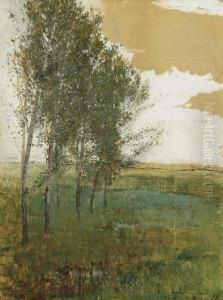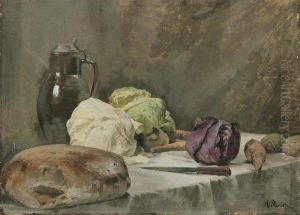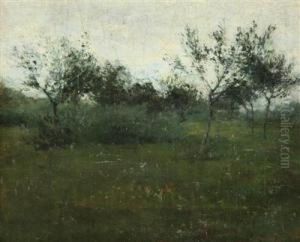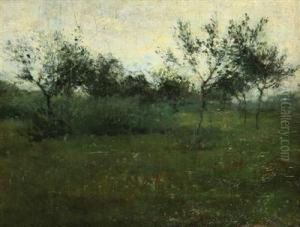Antonin Slavieek Paintings
Antonín Slavíček was a prominent Czech painter, born on May 16, 1870, in Prague, then part of the Austro-Hungarian Empire. He is celebrated for his contributions to Czech Impressionism, a movement that sought to capture the transient effects of light and color in the landscape. His work is deeply rooted in the Czech countryside, reflecting a profound connection to his national heritage and the natural world.
Slavíček’s early artistic education took place at the Academy of Fine Arts in Prague, where he studied under the guidance of Julius Mařák, a landscape painter who had a significant influence on his development. Under Mařák's mentorship, Slavíček honed his skills in capturing the nuances of the Czech landscape, developing a keen eye for color and light that would define his later work. After his studies in Prague, he sought further artistic development in Paris, a common destination for many artists of his time seeking exposure to the avant-garde movements of the late 19th and early 20th centuries.
Upon returning to the Czech Republic, Slavíček became an integral part of the artistic community, joining the Mánes Union of Fine Arts, an association that played a crucial role in the development of modern Czech art. His paintings from this period show a shift towards Impressionism, characterized by loose brushwork, vibrant color palettes, and a focus on the atmospheric effects of light. He often painted scenes of the Vltava River and its surroundings, the countryside of Kameničky, and intimate gardens and streets of Prague, capturing the changing seasons and times of day with sensitivity and a deep emotional connection.
Despite his success and recognition as a leading figure in Czech art, Slavíček's life was marked by personal tragedies and health issues. His passionate and emotional nature is reflected in his works, which convey a sense of immediacy and intimacy. Tragically, Slavíček’s life was cut short when he died by suicide on February 1, 1910, in Prague. His death was a great loss to the Czech art world, but his legacy lives on through his influential body of work, which continues to be celebrated for its contribution to the Impressionist movement and its depiction of the Czech landscape and spirit.



